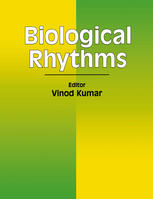

Most ebook files are in PDF format, so you can easily read them using various software such as Foxit Reader or directly on the Google Chrome browser.
Some ebook files are released by publishers in other formats such as .awz, .mobi, .epub, .fb2, etc. You may need to install specific software to read these formats on mobile/PC, such as Calibre.
Please read the tutorial at this link: https://ebookbell.com/faq
We offer FREE conversion to the popular formats you request; however, this may take some time. Therefore, right after payment, please email us, and we will try to provide the service as quickly as possible.
For some exceptional file formats or broken links (if any), please refrain from opening any disputes. Instead, email us first, and we will try to assist within a maximum of 6 hours.
EbookBell Team

5.0
100 reviews(Chapters 11 to 14) summarise important features of the biological clock at the level of whole animal covering all vertebrate classes (fish to mammal). Chapters 15 and 16 are on long term (seasonal) rhythms in plants and higher vertebrates. Short term rhythms (ultradian rhythms), the significance of having a clock system in animals living in extreme (arctic) environments, and the diversity of circadian responses to melatonin, the key endocrine element involved in regulation of biological rhythms, have been discussed in Chapters 17 to 19. Finally, a chapter on sensitivity to light of the photoperiodic clock is added which, using vertebrate examples, illustrates the importance of wavelength and intensity of light on circadian and non-circadian functions. A well-known expert writes each chapter. When presenting information, the text provides consistent thematic coverage and feeling for the methods of investigation. Reference citation within the body of the text adequately reflects the literature as subject is developed. A chapter begins with an abstract that enables a reader to know at the first glance the important points covered in that chapter. The chapter concludes with a full citation of references included in the text, which could be useful for further reading. The book ends with a comprehensive subject index that may be useful for quick searches.